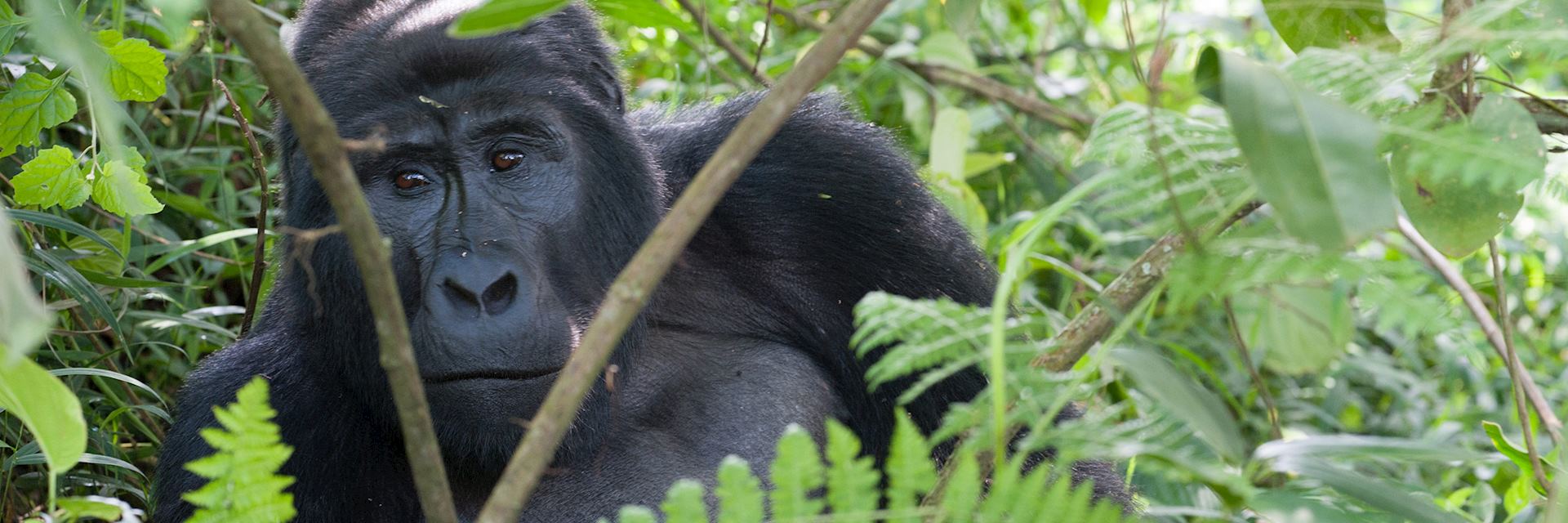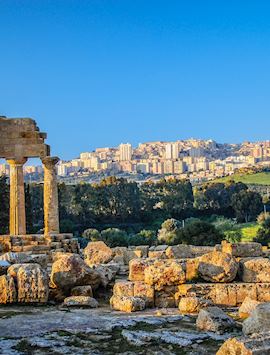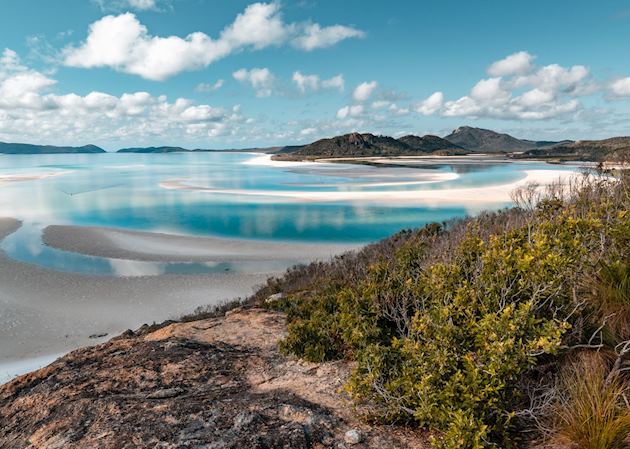Like birdwatching? Then perhaps you’ve already spied many rare species in Costa Rica… but have you considered the sanctum for birdlife that is India? Or — if you’ve already embarked on gorilla trekking in Uganda — you might enjoy observing orangutans in Indonesia.
Often, countries that are wildly different — both geographically and geopolitically — offer similar fulfilling experiences. With this in mind, here are some not-always-immediately-obvious pairings.
Already been hiking in New Zealand’s untamed landscapes? Why not try the wilds of Patagonia?
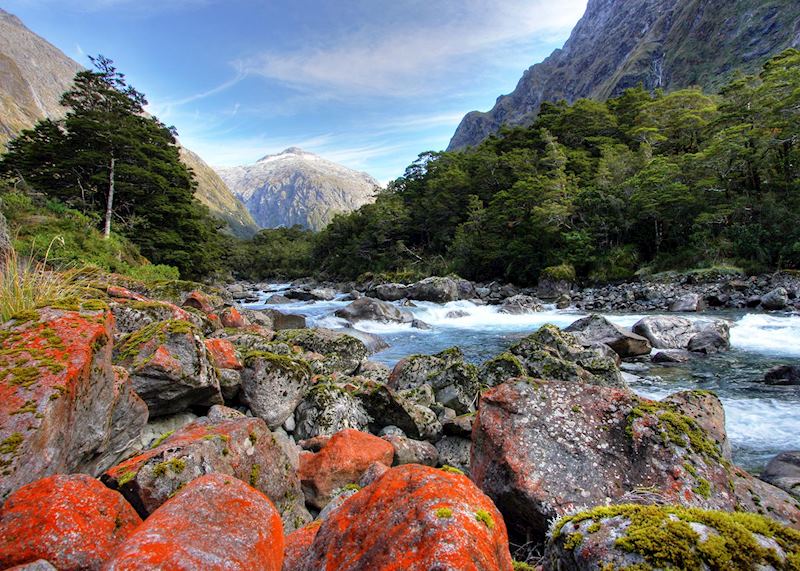
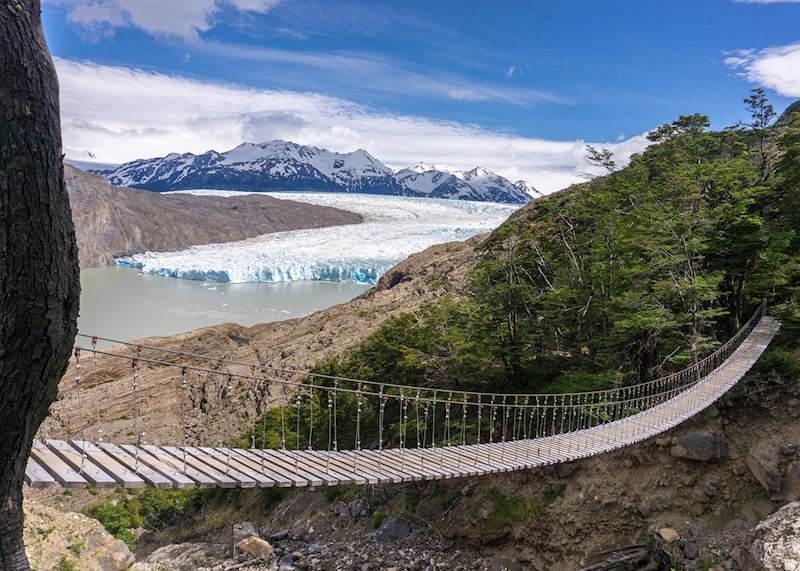
‘I could not say when I first grew to love the wild, only… that a need for it will always remain strong in me.’ Agree with Robert Macfarlane? We think two of the best places that fulfill this yearning are Patagonia and New Zealand ― particularly their hiking trails.
On the South Island’s Hollyford Track you’ll walk through beech and podocarp forest. Mosses hang gauze-like from branches and often encase trunks, muting your footsteps. The air is vegetal, loamy and yet icily pure; you want to keep gulping down great lungfuls of it.
Stray even a short way from the path and you’d be engulfed in a matted jade underworld that has barely known human presence. At dusk, patches of bush are webbed with phosphorescent pinpricks — glow-worms.
In contrast, much of Patagonia is a glacially gouged hinterland. The French Valley trek in Chile’s Torres del Paine National Park takes you over rope bridges, through canyonesque scenery, and across boulder fields to a ridge overlooking brooding slate-gray and sooty-black peaks spliced with hanging glaciers. You might just see condors whirling above.
Sometimes, there’ll be a low, lugubrious rumble or a thunder-clap-crack: an avalanche is coming. Safe on your vantage point, you’re free to observe the cascades of snow and calving ice on the mountainsides opposite.
- Read more about trips to New Zealand or Chilean Patagonia
Already been birdwatching in Costa Rica? Why not look for rare birdlife in India?
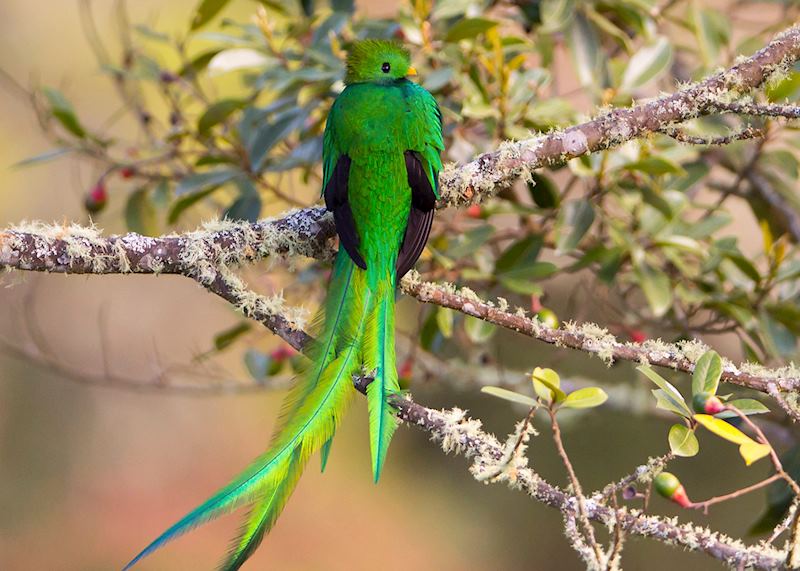

Pick up a tome on ‘Birds of the World’ and you’ll find chunks devoted to India and Costa Rica. Their varied topography entices a range of avifauna.
From a river boat in Chambal Sanctuary, you might see rare Indian skimmers, great stone-curlews, comb and Brahmani ducks, kingfishers, flamingos, and ten types of eagle, among many other species. Located in the Ranthambhore, Keoladeo Ghana National Park is a popular spot for more than 370 bird species, including 150 migrants, some of which come from as far away as Siberia. During the winter, the local bird population swells to around half a million, making it an excellent time for a slow cycle rickshaw ride through the sanctuary.
Meanwhile, king vultures (not to mention Central America’s largest scarlet macaw population) haunt the rainforest canopies of Costa Rica’s Osa Peninsula. And, in San Gerardo de Dota’s cloudforest, you might find yourself in the presence of the iridescently plumed resplendent quetzal.
Both countries also do a good line in wetland and riverine birds. Cruising the flooded waterways of Tortuguero National Park, you might see the boat-billed heron (when flustered, it splays its head feathers). India counters with the Denwa Backwaters of Satpura National Park, where you can take a leisurely canoe safari to spot more than 250 species, including the Malabar whistling thrush, paradise fly-catcher, honey buzzard, or a Malabar pied hornbill, with its distinctive beak.
Most birdwatching guides in both Costa Rica and India are professional wildlife specialists, with training or even degrees in ornithology. And, because they are your personal guide, you’ll always be able to stop to admire a rare sighting on your drive.
- Read more about trips to India or Costa Rica
Already toured the wineries of France’s Châteauneuf-du-Pape appellation? Why not visit the vineyards of Australia’s Margaret River region?
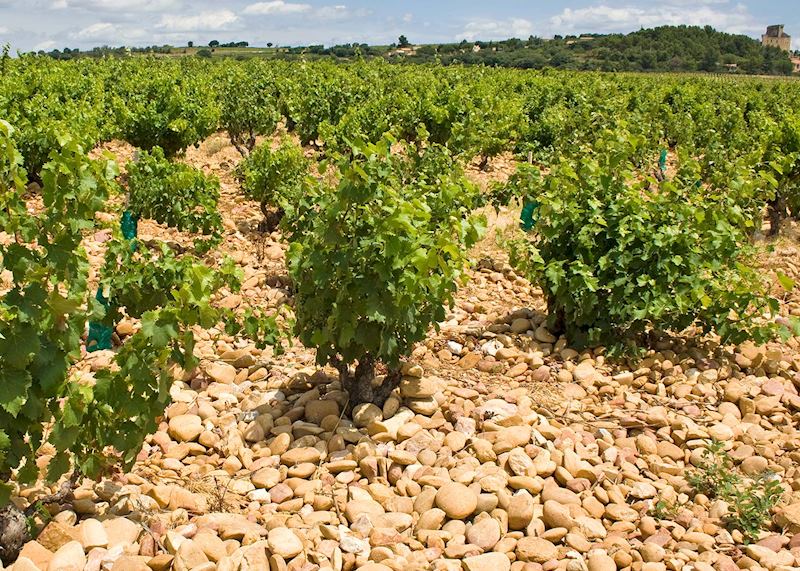
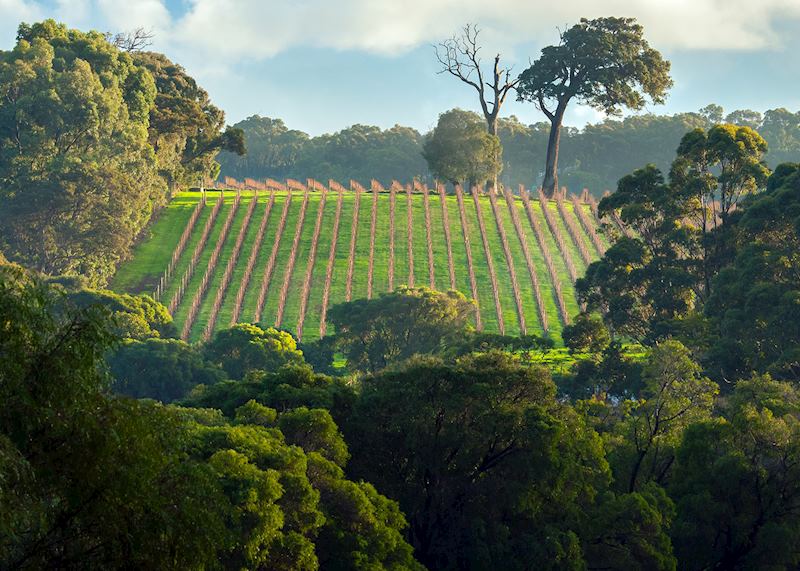
When we want to visit wineries, we head for Châteauneuf-du-Pape and Australia’s Margaret River region. Despite wildly different climates, each is known for vintages that embody the terroir of the area.
One of France’s most exclusive appellations, tiny Châteauneuf-du-Pape is subject to the drying mistral winds and endless sunshine. Vignerons here cover their fields in galets, fist-sized limestone pebbles that absorb the heat of the sun during the day and release it slowly at night. They also keep the relentless winds from whisking away the moisture in the soil. Because demand is so high, almost every arable inch is under cultivation.
In the Margaret River region of Western Australia, however, the land is patchworked with jarrah and karri forest, and silky beaches lie a ten-minute drive away. Wineries in Margaret River are more spaced out, so your best option is to let someone else do the driving and take a small-group guided tour. Chardonnay is the wine du jour here, but fresh farm-to-table platters are offered everywhere: the ideal accompaniment.
Already tracked gorillas in Uganda? Why not spot orangutans in Indonesia?
.jpg?q=79&w=800&h=571)
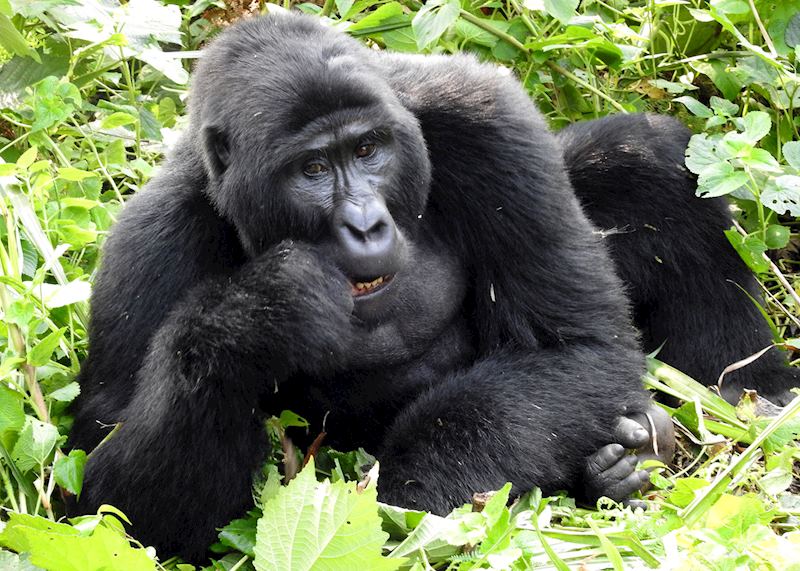
Observing apes in the wild can be a challenge — but hike in the far-flung forests of Uganda or Indonesia, and you stand a good chance.
Gunung Leuser National Park lies in the north of Sumatra, Indonesia’s largest island. You can take guided treks in its rainforest understorey where, in the dappled light, you might see orangutans swinging above. Almost exclusively arboreal, they seem blissfully unperturbed by man’s proximity. Sumatran orangutans are considered to have stronger family ties than their Borneo counterparts (plus, they’re fluffier), and you might notice small groups feeding together on fig trees.
In Uganda, treks to see the mountain gorillas in Bwindi Impenetrable Forest are much more regimented which almost guarantees you a sighting. You set off as part of a small group in the early morning, and trackers will try to locate a troop, radioing back instructions to your guide. To reach a troop, you might be hiking strenuously for anything from 30 minutes to more than four hours, clambering over serpentine tree roots and squeezing through knotty bush.
Once near the troop, you can spend an hour with them, always staying 7 m (23 ft) away — although curious adolescent gorillas may wander much closer. In silence, you watch the troop loll in the undergrowth, graze on bark and leaves, or nurse their young.
Already witnessed Sicily’s Villa Romana del Casale mosaics? Why not explore the Roman mosaics in situ at Volubilis, Morocco?

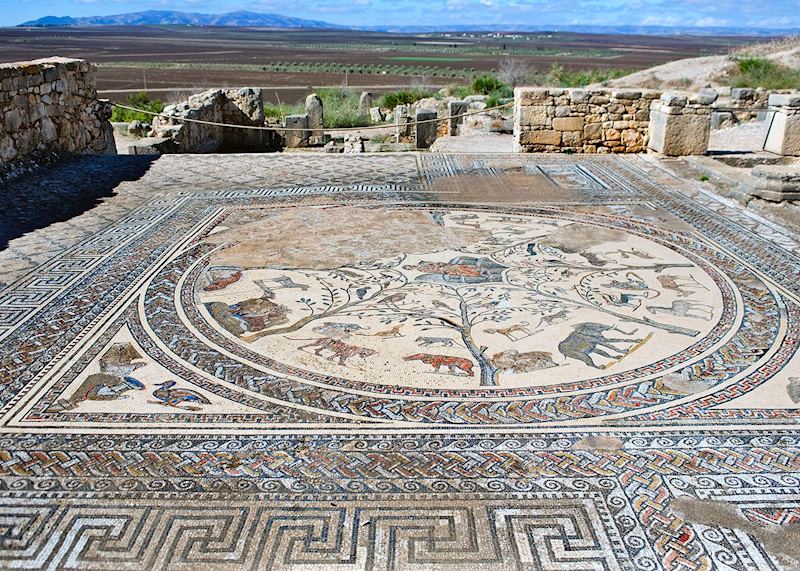
If you want to see Roman mosaics in their original context, we suggest the Villa Romana del Casale in central Sicily and Volubilis, in the Moroccan countryside near Fez.
UNESCO has declared that the 4th-century Villa Romana has ‘the finest mosaics in situ anywhere in the Roman world’. This is thanks to a 12th-century landslide that completely buried the palace in mud, protecting and preserving it for seven centuries.
Its richly detailed mosaics are notable for the bright hues of the tesserae (tiles) and the natural narrative style depicting a wide range of subjects: young women cavorting (seemingly in bikinis), giants battling snakes, and a remarkably life-like tiger, among others.
Villa Romana was probably built about 75 years after the fall of Volubilis, a once-prosperous city whose ruins also include the remnants of lavishly decorated private homes. Possibly due to Volubilis’ age, or possibly because the city was located on the fringe of the empire, the mosaics here are of a slightly more abstract style. Many of them illustrate myths, including depictions of Bacchus, Hercules, and Jupiter, but there are also chariot races, animals and even comical works, such as one of a young man riding a mule facing backwards, holding out his cup
Also, Volubilis’ ruins are uncovered, allowing you to see the mosaics up close and in natural light.
Start planning your trip
Start thinking about your experience. These itineraries are simply suggestions for how you could enjoy some of the same experiences as our specialists. They’re just for inspiration, because your trip will be created around your particular tastes.
Was this useful?


